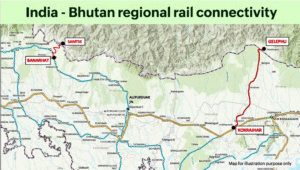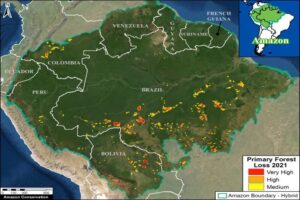
NASA-ISRO Joint Satellite NISAR Set for Historic Launch on July 30
GK & Current Affairs for CLAT | CLAT Current Affairs 2026
Powered by CLAT Gurukul – Best online coaching for CLAT
Why in News:
India and the United States are set to mark a significant milestone in space cooperation with the launch of the NASA-ISRO Synthetic Aperture Radar (NISAR) satellite on July 30, 2025. Developed jointly by NASA and ISRO, this Earth observation satellite will be launched from Sriharikota, Andhra Pradesh at 5:40 PM. The event marks the deployment of the most expensive Earth observation satellite ever built and signifies deepening Indo-US space collaboration.
Introduction:
The NISAR satellite represents a new era in space-based Earth observation. It is a collaboration between two of the world’s leading space agencies—NASA (National Aeronautics and Space Administration) and ISRO (Indian Space Research Organisation). Equipped with cutting-edge radar imaging systems, the satellite is designed to observe Earth’s surface changes with unprecedented precision and is set to revolutionize how we track climate change, natural disasters, agricultural patterns, and more. This launch is particularly significant as it embodies strategic cooperation, scientific advancement, and technological sophistication.
The following detailed summary provides insights into the technical specifications, strategic importance, environmental applications, and international cooperation reflected in the NISAR project. It is a crucial current affairs topic for aspirants of CLAT 2026 and is being discussed under the theme “CLAT Current Affairs 2026” and “Current Affairs 2026” to enrich the knowledge base of law aspirants enrolled with the best online coaching for CLAT like CLAT Gurukul.
Point-wise Summary of the News Article:
- Launch Details:
- The NISAR satellite will be launched on July 30 at 5:40 PM IST.
- Launch location: Sriharikota, Andhra Pradesh – India’s primary space launch center.
- Vehicle: GSLV-F16 rocket will place it into a 734 km Sun-synchronous orbit.
- What is NISAR?
- NISAR stands for NASA-ISRO Synthetic Aperture Radar.
- It is an Earth observation satellite.
- Will observe Earth’s surface every 12 days using synthetic aperture radar (SAR).
- It is the first satellite to use both NASA’s L-band and ISRO’s S-band radar frequencies.
- The satellite weighs 2,392 kg.
- Purpose & Capabilities:
- Monitors Earth’s surface changes in fine detail – up to one centimeter.
- Will help track:
- Retreat of glaciers
- Soil moisture
- Flood patterns
- Landslides
- Earthquakes
- Volcanoes
- Forest and vegetation changes
- Sea level rise
- It is equipped to capture data both day and night, regardless of weather conditions.
- Cost and Scale:
- Estimated cost of $1.5 billion, making it the most expensive Earth observation satellite.
- ISRO’s contribution is around ₹469.4 crore.
- Strategic and Environmental Importance:
- The data will assist in disaster management, natural hazard prediction, agricultural planning, and climate change analysis.
- Crucial for policy implementation concerning environment, resource planning, and disaster mitigation.
- Delays and Development:
- Launch was delayed due to a 12-meter wire harness issue in the radar antenna.
- The satellite was shipped back to the U.S. for fixing and reassembled in India afterward.
- Long-Term Collaboration:
- Represents over a decade-long scientific collaboration between NASA, ISRO, and JPL (Jet Propulsion Laboratory).
- Highlights India’s growing footprint in global space diplomacy.
Legal and Strategic Significance for CLAT Aspirants:
- Bilateral Agreements: This collaboration is based on a bilateral framework between the U.S. and India, underlining diplomatic and legal arrangements in the realm of outer space cooperation.
- International Law: The development touches upon Outer Space Treaty, 1967, and bilateral space-sharing protocols.
- Environmental Law Linkages: The satellite will help monitor environmental degradation and can play a role in international environmental litigation, evidence generation, and compliance tracking under climate conventions.
- Tech Law & Data Sharing: The NISAR project also opens debates on data sovereignty, privacy in satellite surveillance, and cross-border data sharing—relevant for questions in law entrance exams and interviews.
Notes: Explanation of Peculiar Terms
- Synthetic Aperture Radar (SAR):
- A radar technique that uses the motion of the radar antenna over a targeted region to provide finer spatial resolution.
- Can penetrate clouds, vegetation, and even ground in some conditions.
- L-band & S-band Radar:
- L-band: Long wavelength radar (1–2 GHz) used for detecting deeper ground moisture, forest biomass.
- S-band: Shorter wavelength radar (~2–4 GHz), ideal for finer surface observation.
- Combining both allows dual-frequency imaging of high accuracy.
- Sun-Synchronous Orbit:
- A near-polar orbit that allows the satellite to pass over the same part of the Earth at roughly the same local solar time each day—ideal for comparing observations over time.
- GSLV-F16:
- Geosynchronous Satellite Launch Vehicle – an Indian launch vehicle capable of deploying heavy satellites into higher orbits.
- 12-meter Harness:
- A long internal wire connection essential for signal transmission between components; its malfunction caused the delay.
Enriched Insights:
- Data Utilization for Legal Studies: As space technology intersects with legal policy (e.g., space laws, data regulation, and climate justice), CLAT aspirants must understand the legal implications of data acquired by such satellites in framing climate change policy and disaster response legislation.
- Role in SDGs: NISAR data will significantly contribute to tracking UN Sustainable Development Goals (SDGs), especially SDG 13 (Climate Action), SDG 11 (Sustainable Cities), and SDG 15 (Life on Land).
- Boost to Indian Space Diplomacy: The collaboration sets a precedent for joint space missions, and might inform international cooperation frameworks that law professionals and policymakers will navigate in the future.
Conclusion:
The NISAR launch is not just a scientific milestone but a marker of international collaboration, environmental vigilance, and technological prowess. It is a great example of how space science is now deeply integrated with governance, environmental law, and policy formulation. The role of this satellite in observing Earth’s changing patterns offers valuable insight for legal debates surrounding climate responsibility, state accountability, and data usage protocols.
CLAT aspirants preparing with the best online coaching for CLAT must remain updated with such developments, not only because they appear in CLAT Current Affairs 2026 sections, but also because they broaden the aspirant’s interdisciplinary thinking across law, science, and public policy.
This Blog is Powered by CLAT Gurukul — India’s Leading Law Entrance Prep Platform
At CLAT Gurukul, we believe in empowering future legal minds with the right blend of knowledge, strategy, and mentorship. This blog is a reflection of our commitment to quality content that not only helps aspirants stay updated but also sharpens their conceptual clarity.
Why CLAT Gurukul?
- Personalized Mentorship by Top Legal Educators
- Comprehensive Study Materials & Legal Updates
- Daily Practice Sets, Mocks & Performance Tracking
- Result-Oriented Strategy for CLAT, AILET, and CUET
Whether you’re reading this article to deepen your understanding or to stay ahead in your exam prep — you’re already one step closer with CLAT Gurukul by your side.
Join thousands of successful aspirants who trusted CLAT Gurukul and cracked India’s top law entrance exams.
Visit https://www.youtube.com/@CLATGurukul/shorts to learn more or speak to our experts now!
Note from CLAT Gurukul
At CLAT Gurukul, we are committed to providing free CLAT study material, including CLAT current affairs, legal reasoning practice sets, general knowledge updates, logical reasoning questions, English comprehension exercises, and more — all curated by top mentors.
Our blog section is regularly updated with high-quality CLAT content tailored to match the evolving pattern of the CLAT UG exam. Whether you’re looking for CLAT 2026 current affairs, CLAT legal reasoning passages, or mock practice sets, we have you covered.
We believe in open-access learning and will continue to publish free CLAT preparation resources to help serious aspirants succeed.
Explore more free content under categories like:
Best online coaching for CLAT, CLAT current affairs, CLAT GK updates, CLAT legal updates, CLAT logical reasoning, and CLAT English preparation.
For structured learning, daily mocks, and expert mentorship, visit https://www.youtube.com/@CLATGurukul/shorts — the Best CLAT Coaching in Patna and India’s most trusted platform for CLAT online coaching.




